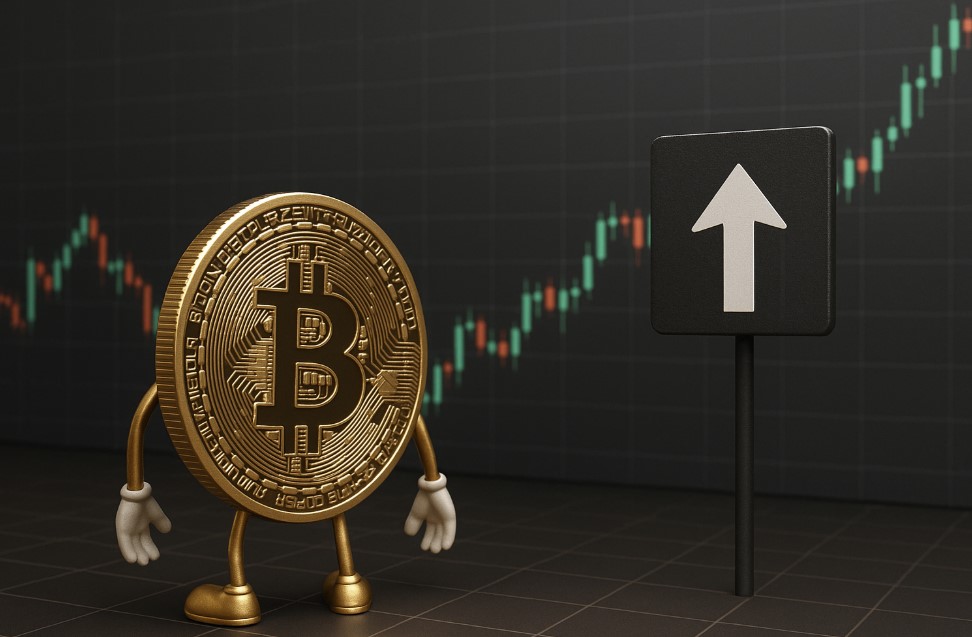For Glassnode, the bullish recovery will be limited for now.
It is necessary for long-term investors to accumulate positions again.
Over the past few days, the price of bitcoin (BTC) has shown signs of exhaustion after several months of sustained appreciation.
According to data from analytics firm Glassnode, the market is at a fragile equilibrium point, characterized by declining bullish momentum and increased selling pressure from long-term holders (LTH).
According to the analysts From Glassnode, bitcoin’s recent price structure replicates the bounce patterns seen in the quarters following the last all-time high (ATH) reached in 2024. At that time, temporary rallies were quickly contained by existing supply.
Specialists note that renewed selling by long-term holders has amplified resistance in the supply zone located between $107,000 and $118,000. This implies that profit taking remains at elevated levels and “continues to limit bullish momentum.”
The following chart, which shows a cost distribution heat map, clearly shows that the price of bitcoin rests on a solid base of support between $95,000 and $100,000.. A large part of the acquired supply is concentrated there.


This zone represents a key level that investors actively defend. Likewise, areas of resistance are identified around $110,000–115,000, where selling pressure could increase.
Indeed, bitcoin has had difficulty maintaining the cost base of short-term holders, located around $113,100.. This is a level considered as a dividing line between the bullish and bearish trend.
Failure to stay above that threshold, after six months of progress, suggests a cooling in demand and a growing risk that the correction will be prolonged, warns Glassnode.
Furthermore, the firm warns that, if this phase extends, the next important technical support is around $88,000 per BTC, a level that represents the average realized price of active investors. Historically, that price has marked the bottom of deeper correctionsremembers the company.
Mixed signals from investor sentiment
Glassnode’s analysis also points to a gradual deterioration in short-term buyer sentiment. The STH-NUPL (net unrealized gains or losses on short-term holders) metric was recently at -0.05. This value reflects slight losses compared to the capitulation phases of previous cycles, when this indicator fell below -0.2. This is what it looks like in the following graph:


The current behavior indicates that, although the market is not yet in a phase of general panic, time is against the bulls. As the price remains within the range of $107,000 to $117,000, Buyer conviction continues to weaken.
Furthermore, one of the factors that weighs most on the current market structure is constant selling by long-term holders. Glassnode estimates that this group’s net position change fell to -104,000 BTC per month, the lowest level since July 2024.
“Large market expansions have historically begun only after long-term holders move from net distribution to sustained accumulation,” the firm warns.
In other words, bitcoin’s recovery will largely depend on these investors resuming accumulation, the analytics firm suggests. And it highlights that the volume of bitcoin transfer from long-term wallets to exchanges—a sign of possible sale— increased to 293 million dollars a day. This is more than double the average observed during the last quarter of 2024, as seen in the graph below:


The above suggests that experienced investors are taking profits, limiting the ability of spot demand to absorb selling pressure.
Glassnode compares this situation to August 2024, when a similar distribution pattern coincided with a slowdown in price momentum. In this sense, the firm warns that, as long as the transfer of currencies by LTHs remains high, The market could remain under pressure in the coming weeks.
Macroeconomic outlook and mixed signals from the United States
Brazilian financial analyst André Chalegre believes that, in addition to on-chain data, macroeconomic factors will continue to be determining factors for bitcoin’s behavior in the short term.
“To know how the market is going to behave, we have to observe the data every day, especially the economic data from the United States,” he explains in dialogue with CriptoNoticias. “This allows us to understand if there will be another rate cut or if, next year, the quantitative easing. In any case, the paralysis of the quantitative tightening It is already an excellent sign,” he points out.
In economics, quantitative easing (QE) is an expansive monetary policy through which central banks inject liquidity into the market by purchasing bonds or other financial assets. This is in order to stimulate credit and economic growth when interest rates are very low. Its effect is usually bullish for assets like bitcoinby increasing the amount of money in circulation.
On the contrary, quantitative tightening (QT) involves withdrawing liquidity by selling assets or letting bonds held by the central bank mature. The stoppage of the QT means that this money draining process stops. This is generally interpreted as a sign of monetary easing and a possible boost for financial markets.
The analyst maintains that December 10 could be a key date. That day you will know if the FED will continue or stop its monetary tightening policy. Chalegre recalls that “Powell has already said that he is not sure about making another cut this year, which generated uncertainty in the market.”
“However, the announcement that they could completely stop QT is a positive sign, although it may already be anticipated by the market,” said the specialist.
Adding to this uncertainty is the lack of recent data due to the US government shutdown, which has been going on for almost a month. This prevents the publication of key indicators such as employment. “The lack of information increases volatility,” adds the analyst.


Buy bitcoin when there is fear
Chalegre, who is a member of the analysis and advisory company LVTN Corp, suggests keeping an eye on the fear and greed index as a thermometer of market sentiment.
“I like to buy when everyone is afraid,” he says. “If one analyzes and sees that, macroeconomically and on-chain, there are no signs of a bear market, then that generalized fear can be an excellent buying opportunity,” he says.
On the other hand, Chalegre identifies an important supporting factor in institutional demand. «In previous cycles, when whales sold large quantities, the price fell. But now we are seeing the opposite: a strong institutional entry with managers like BlackRock, Grayscale and new ETFs. This is opening the doors for a longer expansion of the cycle,” he says.
The analyst points out that institutional purchases are usually made in OTC markets (over-the-counter), outside of the exchanges, so its effect on the price is not immediatebut significant in the medium term.
Therefore, he concludes, “it is this behavior that is supporting the market and making a real difference compared to previous cycles.”






Leave a Reply